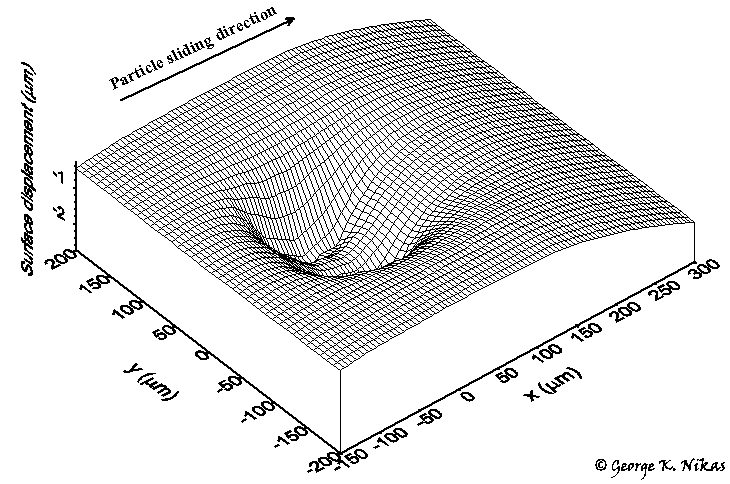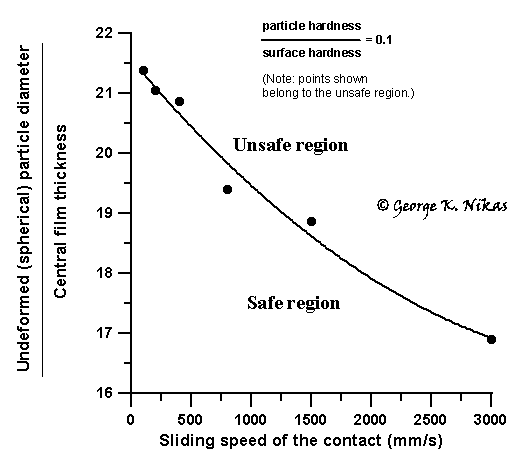
Paper: Thermoelastic distortion of EHD line contacts during the passage of soft debris particles.
Authors: Nikas, G. K., Sayles, R. S., Ioannides, E.
Published in: Transactions of the American Society of Mechanical Engineers (ASME), Journal of Tribology, 1999, 121(2), 265-271
Abstract
During the passage of a debris particle through an EHD contact, mechanical stresses due to particle compression and thermal stresses due to particle frictional heating produce a thermoelastic/plastic stress field, which governs the way a possible damage is generated. In the present paper, the complete three-dimensional solution of the thermoelastic distortion of surfaces due to the compression of a soft, ductile debris particle in an EHD line contact is presented both theoretically and through a realistic example. It is found that thermal stresses increase the likelihood of yielding and produce a characteristic "omega" shaped thermoelastic surface displacement. The important outcome of this work is the construction of a map, which shows the critical particle size to cause damage (plastic deformations) in combination with operational parameters such as the lubricant film thickness and relative sliding velocity of the contact.
Some figures from this work
Figure 1 shows the thermoelastic distortion (mechanical + thermal normal displacement) of one of the two counterfaces of a typical elastohydrodynamic line contact (central film thickness = 0.7 microns) during the passage of a soft spherical metallic particle, 30 microns in diameter. The particle is eight times softer than the contact counterfaces (100 HV against 800 HV) and the maximum flash temperature on the surface shown in Fig. 1 (heat generated due to friction with the squashed particle) is computed to be 356 °C (actually found to be underestimated in a later study by the author).

Fig. 1. Thermoelastic surface normal displacement during the passage of a soft spherical 30 micron particle through a typical elastohydrodynamic line contact.
Figure 2 below shows a cross-section of the surface of Fig. 1 and reveals the shape of a central hill-like feature. This feature or "hump" is the result of the thermal stresses operating in the locality from the frictional heating created by the particle.

Fig. 2. Thermoelastic surface normal displacement - cross-section of that in Fig. 1.
A map showing the regions of safe/unsafe operation of a lightly contaminated elastohydrodynamic line contact with at least some degree of sliding is shown in Fig. 3, taking into account the sliding speed of the contact and the size of the spherical solid contamination particles relatively to the central film thickness of the contact. The map took about 3 months of CPU time to be constructed point by point using a 266 MHz Pentium PC (3-d subsurface stress analysis is very time-consuming).

Fig. 3. Map showing safe and unsafe regions of operation of a lightly contaminated elastohydrodynamic line contact.